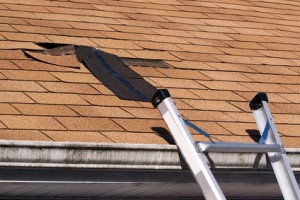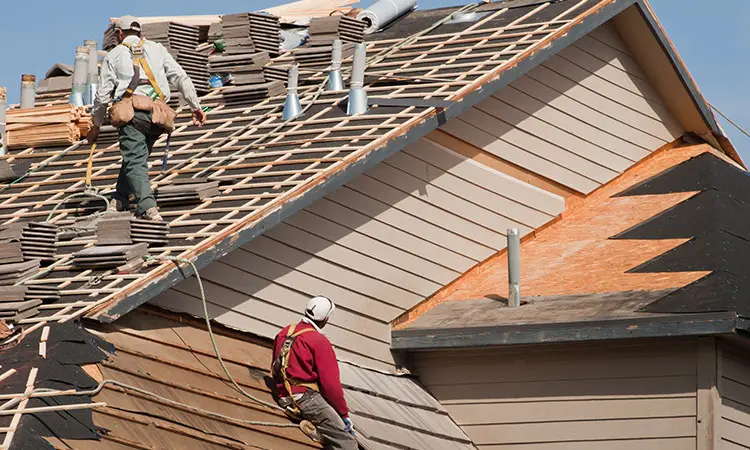Roofing Companies Oahu: Premier Roofers for All Roofing Projects
Roofing Companies Oahu: Premier Roofers for All Roofing Projects
Blog Article
Comprehending the Various Kinds Of Roofs: A Comprehensive Overview for Homeowners
With an array of alternatives-- ranging from the traditional gable to the contemporary level-- each type provides unique benefits and obstacles that ought to straighten with the home owner's particular needs and ecological considerations. As we explore the details of various roof covering kinds, it comes to be noticeable that one dimension does not fit all; the ideal option may surprise you.
Saddleback Roof
Saddleback roofs, defined by their triangular form, are among the most prominent roof covering styles because of their simpleness and effectiveness in shedding water and snow. This layout includes two sloping sides that satisfy at a ridge, enabling efficient drain and lessening the threat of water accumulation. The steep pitch generally related to gable roofing systems boosts their capacity to deal with hefty rainfall, making them ideal for various climates.
In addition to their practical benefits, saddleback roofs provide visual flexibility. They can be adapted to various building styles, from typical to modern homes. The style can likewise suit additional attributes such as dormer windows, which improve natural light and ventilation in the attic space.
Additionally, gable roofs provide adequate room for insulation, adding to energy effectiveness. Homeowners can select from a variety of roof materials, consisting of asphalt shingles, steel, and ceramic tiles, additionally improving personalization choices.
Despite their advantages, saddleback roofs might require additional support in locations vulnerable to high winds or hefty snowfall. On the whole, the saddleback roof continues to be a popular option because of its mix of performance, sturdiness, and visual allure.
Apartment Roofs
Flat roofings are typically recognized for their minimalist layout and functional applications, specifically in commercial and industrial settings (oahu roofing). These roof coverings feature a nearly horizontal or straight surface area, which enables very easy building and construction and versatile area use. While they might lack the visual allure of pitched roofings, flat roof coverings provide various benefits, specifically in city environments where making best use of space is vital
One of the main advantages of flat roofings is their access. Homeowners can use the roofing space for different objectives, such as rooftop gardens, balconies, or solar panel setups. In addition, level roofings are usually extra affordable to preserve and install compared to their sloped equivalents, as they call for fewer materials and labor.
Nonetheless, level roofing systems do existing certain difficulties. Correct water drainage is vital to prevent water merging, which can bring about leakages and structural damage. For this reason, choosing premium waterproofing products and normal examinations are important for making certain longevity. Typical materials utilized for level roofings consist of built-up roof covering (BUR), modified bitumen, and single-ply membranes, each offering distinctive advantages. On the whole, level roof coverings function as a versatile and useful choice for lots of property owners and organizations alike.
Hip Roofing Systems
Hip roofs are characterized by their sloped sides that converge at the top, developing a ridge. This style is distinctive from saddleback roofs, as all four sides of a hip roofing slope downwards towards the walls, providing an extra steady structure. The angle of the inclines can vary, enabling convenience in architectural appearances and capability.
Among the primary benefits of hip roofings is their capability to withstand hefty winds and damaging climate condition. The sloped surfaces make it possible for much better water drain, reducing the threat of leaks and water damage. In addition, hip roofings offer raised attic area, which can be used for storage and even exchanged habitable areas.
However, building a hip roof can be more intricate and expensive than less complex roofing kinds, such as gable roofs. The extra product and labor associated with producing the slopes and making sure proper structural stability can lead to greater expenditures. In spite of these disadvantages, lots of house owners favor hip roofings for their resilience, visual charm, and potential for power effectiveness.
Mansard Roofings
Mansard roofs, typically recognized by their special four-sided design, feature two slopes on each side, with the reduced slope being steeper than the top. This building design, stemming from France in the 17th century, is not just cosmetically appealing yet useful, as it makes the most of the functional room in the visit their website upper floors of a building. The high reduced incline enables more headroom, making it an excellent choice for loft spaces or attic rooms, which can be exchanged living rooms.
Mansard roofings are identified by their flexibility, accommodating different building styles, from standard to modern-day. They can be built with various products, including asphalt roof shingles, slate, or steel, supplying homeowners with a variety of choices to match their budget plans and choices. Furthermore, the style enables for the assimilation of dormer windows, enhancing natural light and air flow in the top degrees.
However, it is important to think about the potential drawbacks. Mansard roofing systems might call for more maintenance due to the intricacy of their style, and their high inclines can be testing for snow and rain overflow. Overall, mansard roofs combine style with practicality, making them a popular choice amongst property owners looking for unique building features.
Lost Roofing Systems
As home owners significantly seek simpleness and performance in their architectural designs, shed roofs have actually emerged as a popular selection. Defined by a single sloping airplane, a shed roofing offers a minimalist aesthetic that matches various home styles, from contemporary to rustic.
One of the primary advantages of a shed roof covering is its straightforward building and construction, which typically converts to lower labor and product prices. This design allows for effective water drain, decreasing the danger of leakages and water damages. Additionally, the upright incline gives adequate area for skylights, boosting natural light within the interior.
Dropped roofing systems likewise use flexibility in terms of use. They can be successfully integrated right into additions, garages, or exterior structures like sheds and pavilions. Moreover, this roof covering style can accommodate numerous roof materials, consisting of steel, asphalt roof shingles, or also environment-friendly roof coverings, lining up with green efforts.
Nonetheless, it is vital to think about regional climate conditions, as hefty snow loads may demand modifications to the roofing's angle or structure. Overall, shed roofings present a practical and cosmetically pleasing choice for house owners wanting to optimize performance without jeopardizing design.
Conclusion


Gable roofs, characterized by their triangular form, are amongst the most prominent roofing styles due to their simpleness and efficiency in losing water and snow. oahu roofing. The steep pitch typically linked with gable roof coverings boosts their ability to deal with heavy rainfall, making them ideal for various climates
While they might do not have the visual allure of pitched roofings, flat roof coverings offer countless benefits, specifically in city environments where making the most of area is vital.

Report this page